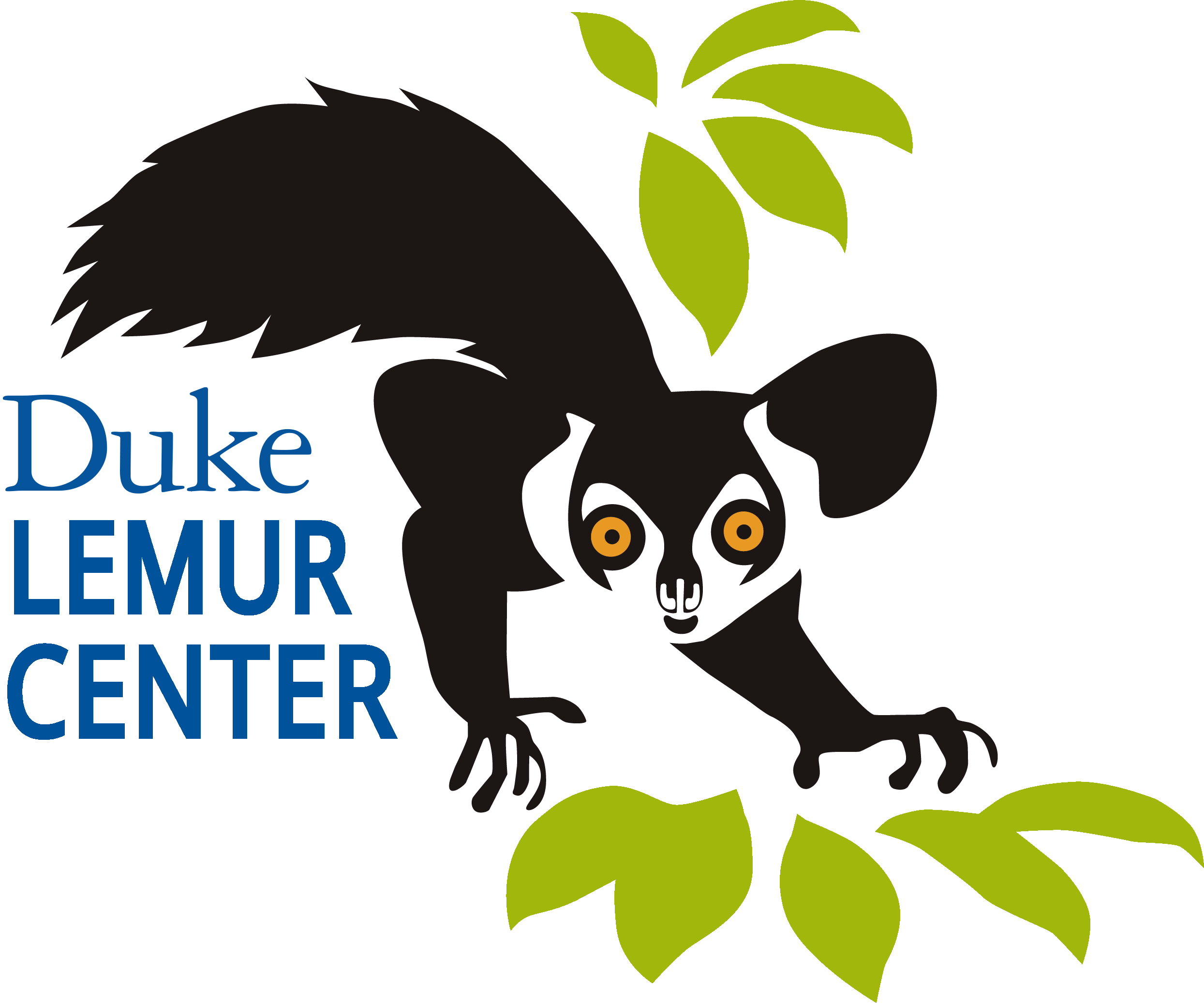| Authors | Publication Title |
| Marina B. Blanco, Lydia K. Greene, Peter H. Klopfer, Danielle Lynch, Jenna Browning, Erin E. Ehmke, and Anne D. Yoder | Body mass and tail girth predicts hibernation expression in captive dwarf lemurs. Physiological and Biochemical Zoology 95(2): 122-129. DOI 10.1086/718222 |
| Kevin J. Guilfoyle, Apryl M. McIntosh, and Kent A. Hatch | Seasonal differences in hair growth rates of captive aye aye, red ruffed, and black-and-white ruffed lemurs. Zoo Biology DOI 10.1002/zoo.21715 |
|
Carly H. Batist and Jessica A. Mayhew
|
Preliminary comparisons of learning trajectories across four lemur genera at the Duke Lemur Center. Folia Primtologica. DOI: 10.1163/14219980-20210501 |
| Nicholas M. Grebe, Alizeh Sheikha, and Christine M.Drea | Integrating the female masculinization and challenge hypotheses: Female dominance, male deference, and seasonal fluctuations in adult blue-eyed black lemurs (Eulemur flavifrons). Hormones and Behavior. DOI: 10.1016/j.yhbeh.2022.105108 |
| Sally L. Bornbusch, Lydia K. Greene, Sylvia Rahobilalaina, Samantha Calkins, Ryan S. Rothman, Tara A. Clarke, Marni LaFleur & Christine M. Drea | Gut microbiota of ring-tailed lemurs (Lemur catta) vary across natural and captive populations and correlated with environmental microbiota. Animal Microbiome 4:29. DOI: 10.1186/s42523-022-00176-x |
| Lydia K. Greene, Erin A. McKenney, William Gasper, Claudia Wrampelmeier, Shivdeep Hayer, Erin E. Ehmke & Jonathan B. Clayton | Gut site and gut morphopology predict microbiome structure and function in ecologically diverse lemurs. Microbial Ecology DOI: https://doi.org/10.1007/s00248-022-02034-4 |
| Steven Heritage and Erik R. Seiffert | Total evidence time-scaled phylogenetic and biogeographic models for the evolution of sea cows (Sirenia, Afrotheria). PeerJ 10:e13886 https://doi.org/10.7717/peerj.13886 |
| Marina B. Blanco, Lydia K. Greene, Laura N. Ellsaesser, Bobby Schopler, Megan Davison, Catherine Ostrowski, Peter H. Klopfer, J Fietz, and Erin E. Ehmke. | Of fruits and fats: High sugar diets restore fatty acid profiles in the white adipose tissue of captive dwarf lemurs. Proceedings B. https://doi.org/10.1098/rspb.2022.0598 |
| Lydia K Greene, Jean-Basile Andriambeloson, Hoby A Rasoanaivo, Anne D Yoder, and Marina B Blanco. | Variation in gut microbiome structure across annual hibernation cycle in a wild primate. FEMS Microbiology Ecology 98(7). DOI: 10.1093/femsec/fiac070 |
| Francesca De Petrillo, Parvathy Nair, Averill Cantwell, and Alexandra G. Rosati | The evolution of cognitive control in lemurs. Psychological Science DOI 10.1177/09567976221082938 |
| George P. Tiley, Tobias van Elst, Helena Teixeira, Dominik Schüßler, Jordi Salmona, Marina B. Blanco, José M. Ralison, Blanchard Randrianambinina, Rodin M. Rasoloarison, Amanda R. Stahlke, Paul A. Hohenlohe, Lounès Chikhi, Edward E. Louis, Ute Radespiel, Anne D. Yoder |
Population genomic structure in Goodman’s mouse lemur reveals long-standing separation of Madagascar’s Central Highlands and eastern rainforests. Molecular Ecology. DOI: 10.1111/mec.16632 |
| Alison M. Murray and Robert B. Holmes | Osteology of the cranium and Weberian apparatus of African catfish families (Teleostei: Ostariophysi: Siluriformes) with an assessment of Palaeogene genera. Vertebrate Anatomy Morphology Palaeontology 9(1): 156-191. ISSN: 2292-1389 |
| Calum J. McKay, Claudia Welbourn-Green, Erik R. Seiffert, Hesham Sallam, Jessica Li, Sophia E. Kakarala, Nigel C. Bennett, Robert J. Asher | Dental development and first premolar homology in placental mammals. Vertebrate Zoology 72: 201-218. DOI 10.3897/vz.72.e78234 |
| John G. Fleagle, Justin T. Gladman, and Richard F. Kay | A new humerus of Homunculus patagonicus, a stem platyrrhine from the Santa Cruz formation (Late Early Miocene), Santa Cruz Province, Argentina. Ameghiniana 59(1): 78-96. https://doi.org/10.5710/AMGH.29.09.2021.3447 |
| Midline growth of the sphenoid bone in primates. American Journal of Biological Anthropology. https://doi.org/10.1002/ajpa.24653 | |
| Lydia K. Greene, Jean-Basile Andriambeloson, Marina B. Blanco, and Erin E. Ehmke | Forest access restores foraging and ranging behavior in captive sifakas. Zoo Biology. https://doi.org/10.1002/zoo.21742 |
| A.-C. Fabre, R. Portela Miguez, C. E. Wall, L. R. Peckre, E. Ehmke, R. Boistel | A review of nose picking in primates with new evidence of its occurrence in Daubentonia madagascariensis. Journal of Zoology. https://doi.org/10.1111/jzo.13034 |
| McElroy, E. J. and Granatosky, M. C. | The evolution of asymmetrical gaits in gnathostome vertebrates. Journal of Experimental Biology 225, jeb243235. |
| Granatosky, M. C., Toussaint, S. L. D., Young, M. W., Panyutina, A. and Youlatos, D. | The northern treeshrew (Scandentia: Tupaiidae: Tupaia belangeri) in the context of primate locomotor evolution: A comprehensive analysis of gait, positional, and grasping behavior. Journal of Experimental Zoology Part A: Ecological and Integrative Physiology 337, 645–665. |
| Granatosky, M. C. and McElroy, E. J. | Stride frequency or length? A phylogenetic approach to understand how animals regulate locomotor speed. Journal of Experimental Biology 225, jeb243231. |
| Faltings, L., Young, M. W., Ross, C. F. and Granatosky, M. C. | Got rhythm? Rhythmicity differences reflect different optimality criteria in feeding and locomotor systems. Evolution 76, 2181–2190. |
| Dickinson, E., Young, M. W. and Granatosky, M. C. | Testing mechanisms for weight support distribution during inverted quadrupedalism in primates. Journal of Experimental Zoology Part A: Ecological and Integrative Physiology 337, 699–708 |

